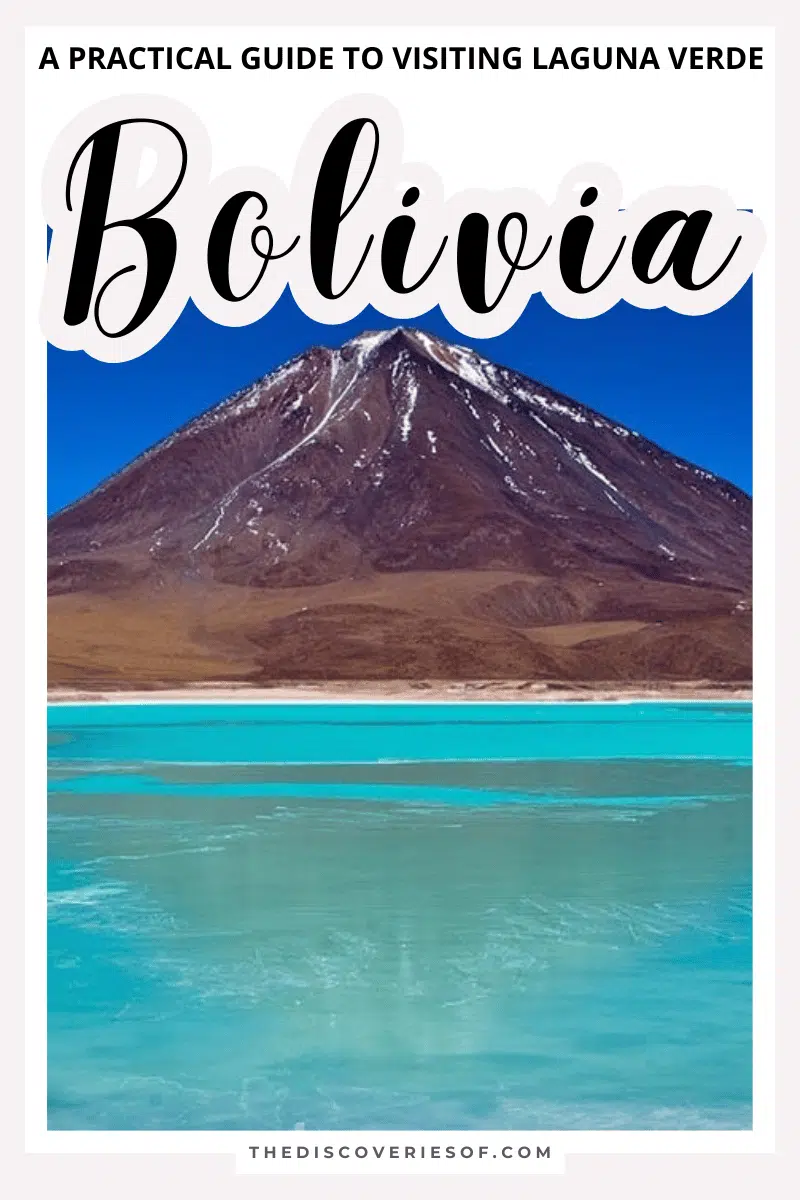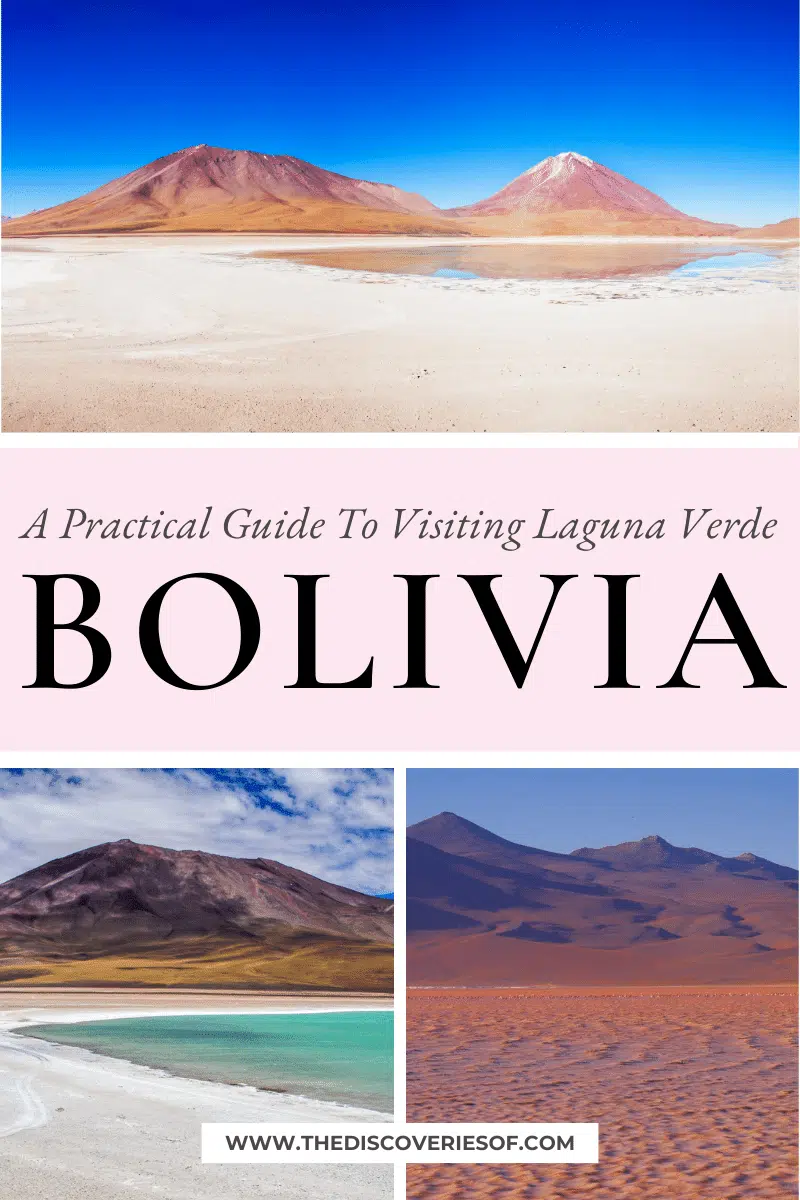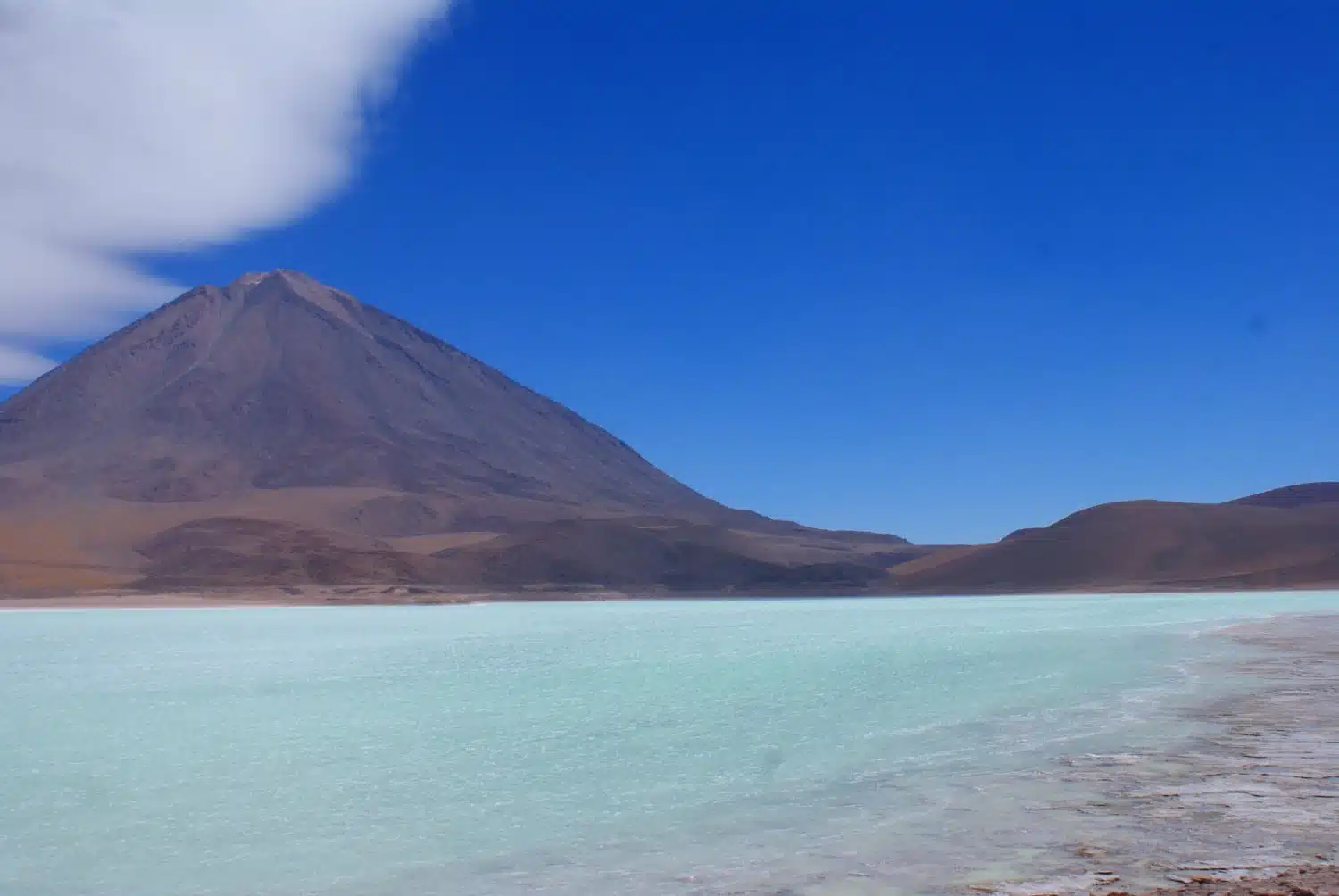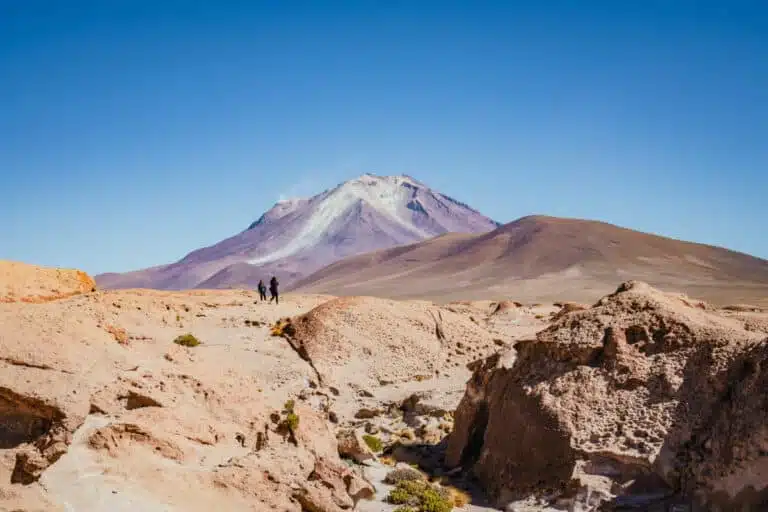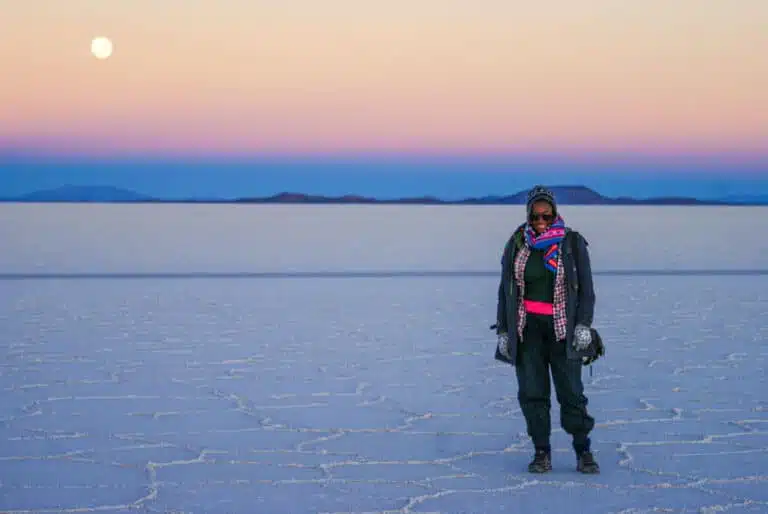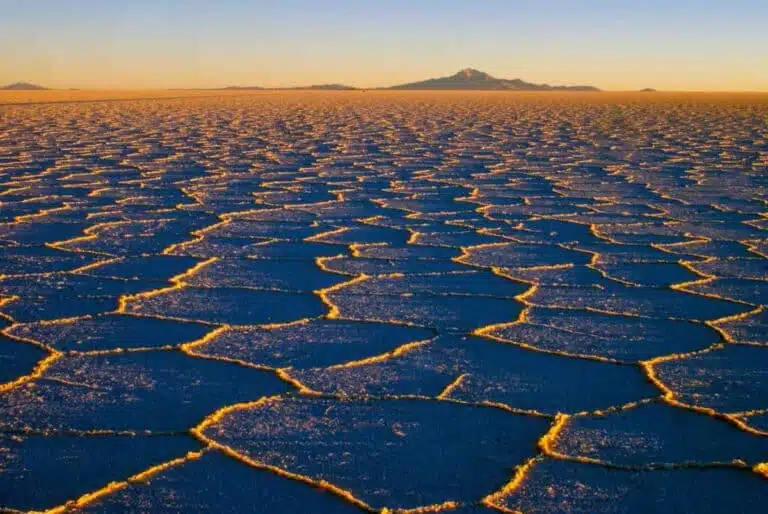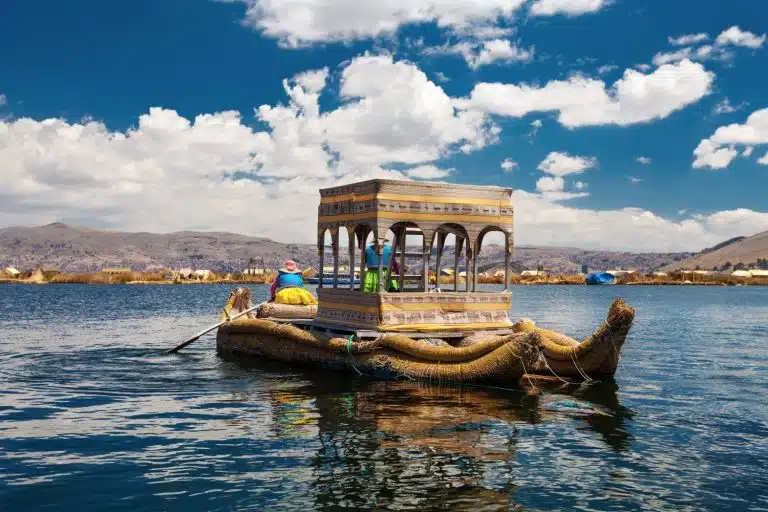Laguna Verde is one of Bolivia’s most striking sights: an emerald green lake set on the backdrop of Licancabur volcano. Here’s why this gem should be at the top of your Bolivian bucket list.
When it comes to Bolivia, people instantly think of the Salt Flats, Lake Titicaca and La Paz. But there is so much more beyond these to explore.
If you want to go somewhere beautiful but with fewer tourists than some of Bolivia’s most popular sights, look no further than Laguna Verde.
Why Go to Laguna Verde Bolivia?
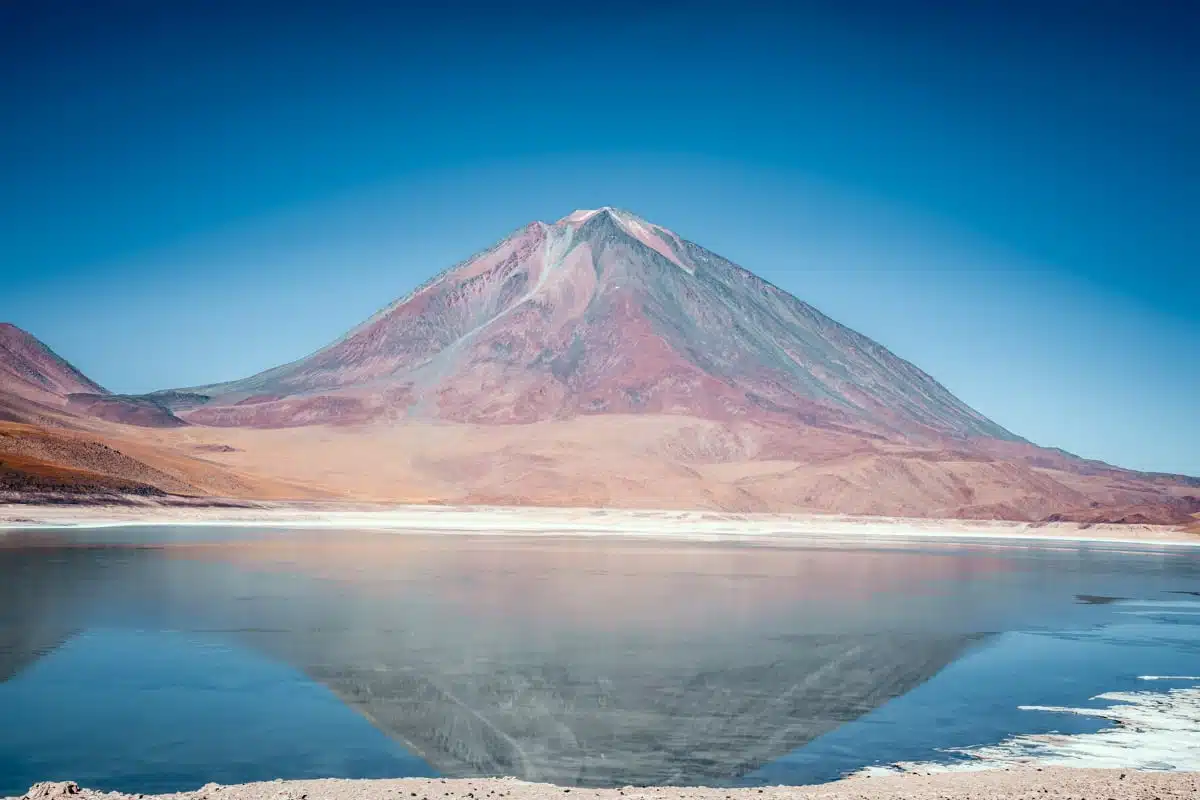
Laguna Verde (which literally means ‘green lake’) is a stunning emerald-green mineral salt lake.
It’s located in the Eduardo Avaroa Andean Fauna National Reserve in the middle of the Andes in the southwest of Bolivia. The national park, which is a wildlife reserve covers 7,147 square kilometres in total.
It’s an area that’s rich in natural resources and home to some of Bolivia’s most striking natural attractions – including the world’s largest salt flat.
The 1.7 square kilometre green lake is placed 4,300m above sea level and sits at the bottom of the dormant volcano, Licancabur. In fact, it’s one of the most striking landscapes in Bolivia.
You can hike to the Inca ruins at the top of Licancabur – they’re believed to once have been an ancient crypt. On top of this, you’re rewarded for your effort with unparalleled views of the Laguna Verde.
Laguna Verde is also home to not one but three species of flamingos, including the rare James Flamingo. Not to mention hot springs which reach a whopping 42°c.
The pink of the flamingos and the reddish-brown tones of the hot springs colour and reddish-brown tones contrast beautifully against the green colour of the lake.
With its beauty, nature and location, this unique and stunning lake is most definitely worth a visit – there is simply nothing else in the world like Laguna Verde. It’s no wonder that it’s often named as one of the most beautiful destinations in Bolivia.
A Little More Info
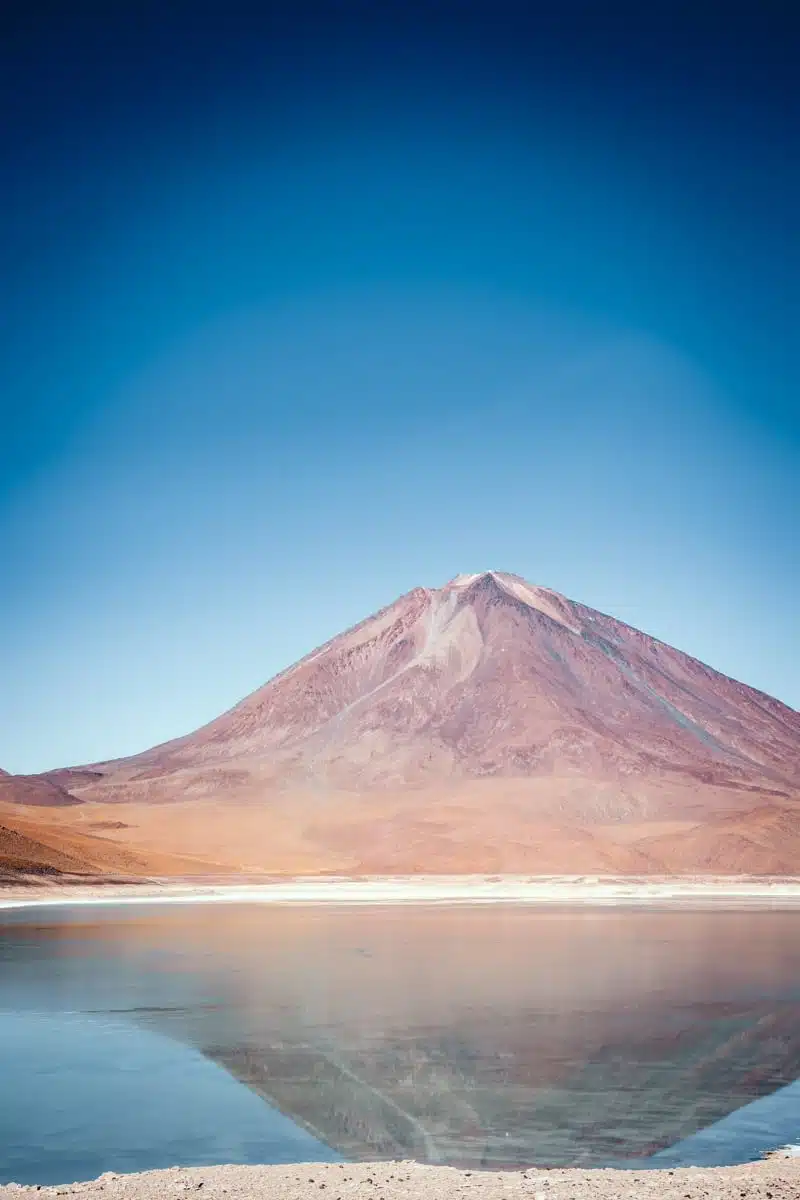
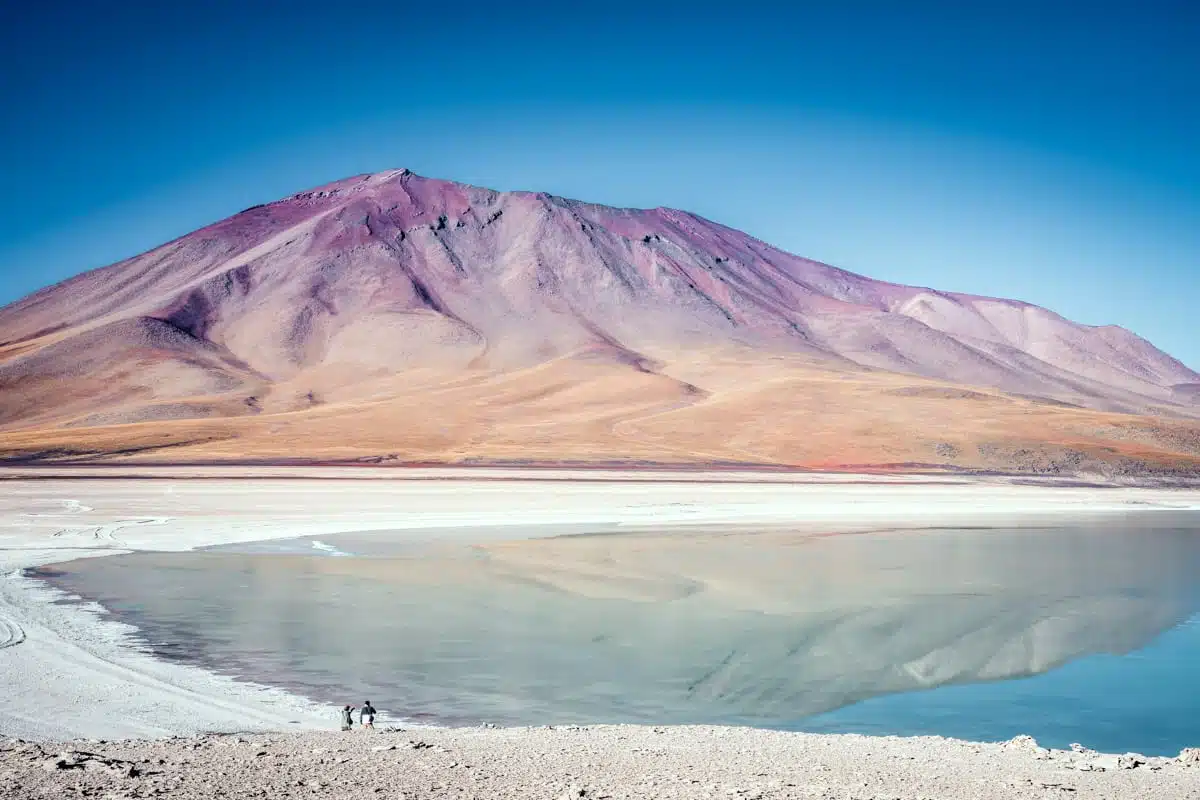
Laguna Verde is located in the southwestern region of Altiplano in Bolivia, near to the Chilean and Argentinian borders.
This Altiplano region is where the Andes are at their widest point, and it was also the site of a few pre-Columbian cities, such as the Chirp and of course the Inca Empire, which is why the Licancabur Volcano has Inca ruins at its peak.
There are many other beautiful sites to see in that region, such as Laguna Colorada (the red lagoon) and the Salar de Uyuni to name a few, which are all good to combine with a trip to Laguna Verde.
Being so high in the Andes and at the base of a volcano means that the area is very high in minerals and metals, and this is where the lagoon gets its wonderful green colour from.
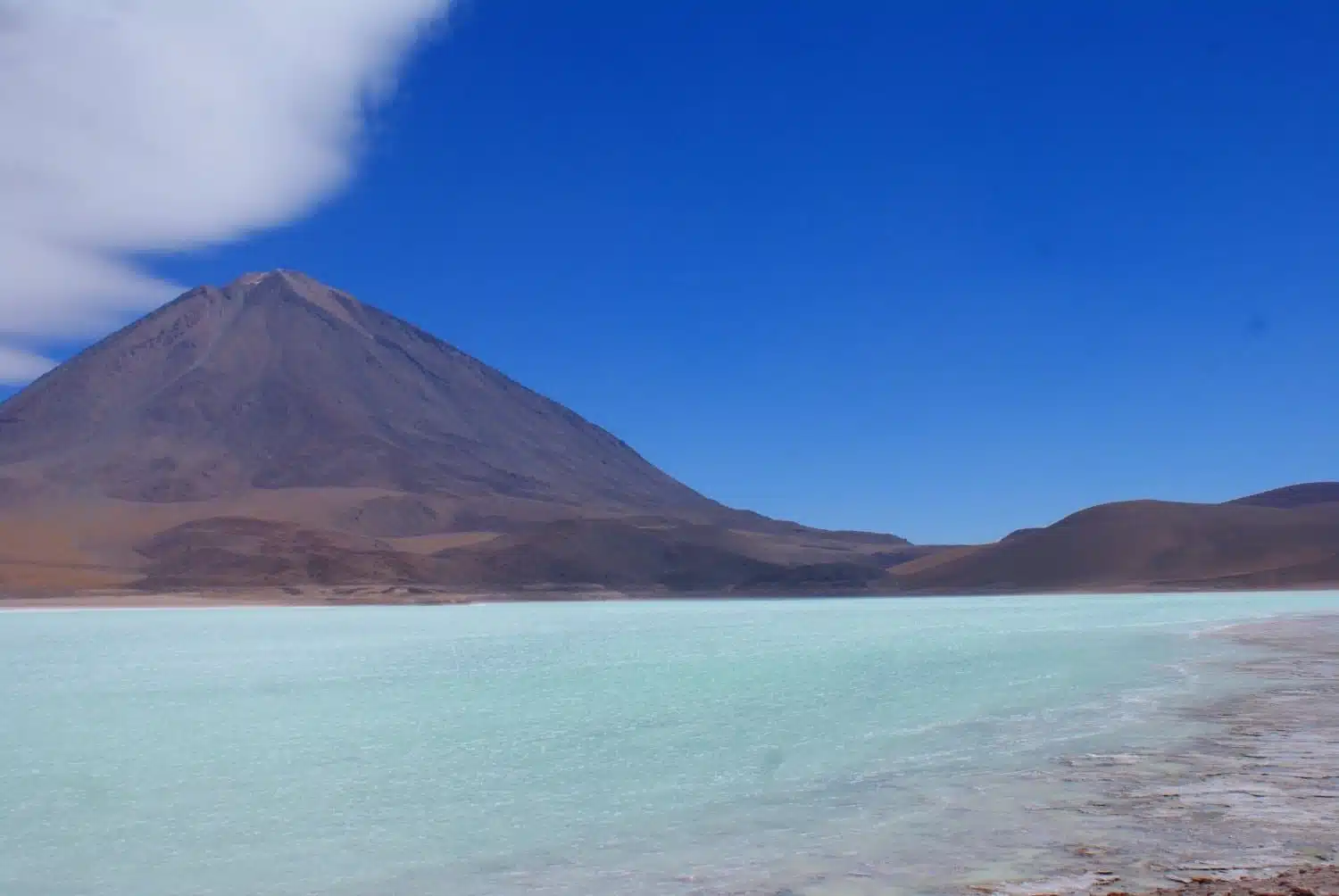
The area is full of magnesium, carbonate, calcium, plumbum and arsenic, which all go into the lake from its subsoil, and are subsequently what gives it its unique colour.
The different colours in the lake can vary from dark emerald to light turquoise, depending on the force of the winds which disturb the sediments at the bottom of the lake.
Top Tip
Licancabur Volcano is a big part of what makes the Laguna Verde so picturesque. The 5,916 m volcano is shaped in a near-perfect cone, and makes for a brilliant backdrop against the lake. It is a photographer’s dream.
When’s the Best Time to Visit?
The best time to go to Laguna Verde is between April and September.
Remember to bring warm clothes, because it is very windy up near the lake. And don’t forget suncream! It is very easy to get burnt round there, even if it’s overcast.
How to Get to Laguna Verde
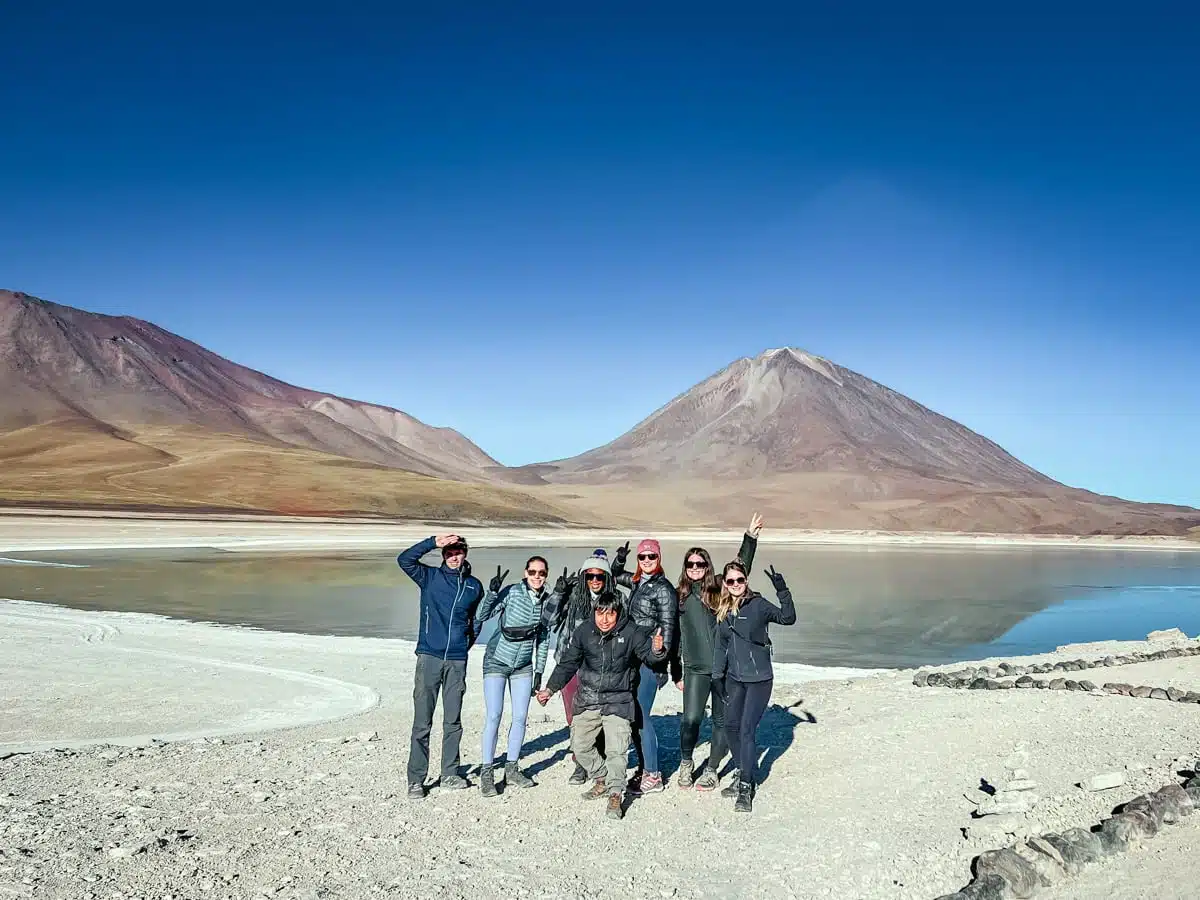
Tour
You won’t find a specific Laguna Verde tour – only multi-day ones that cover some of the highlights of the Bolivian altiplano. The sites visited will vary depending on the tour’s duration – I’d recommend doing one that covers the Laguna Verde, Laguna Blanca, Laguna Colorada and the Salar de Uyuni as a minimum.
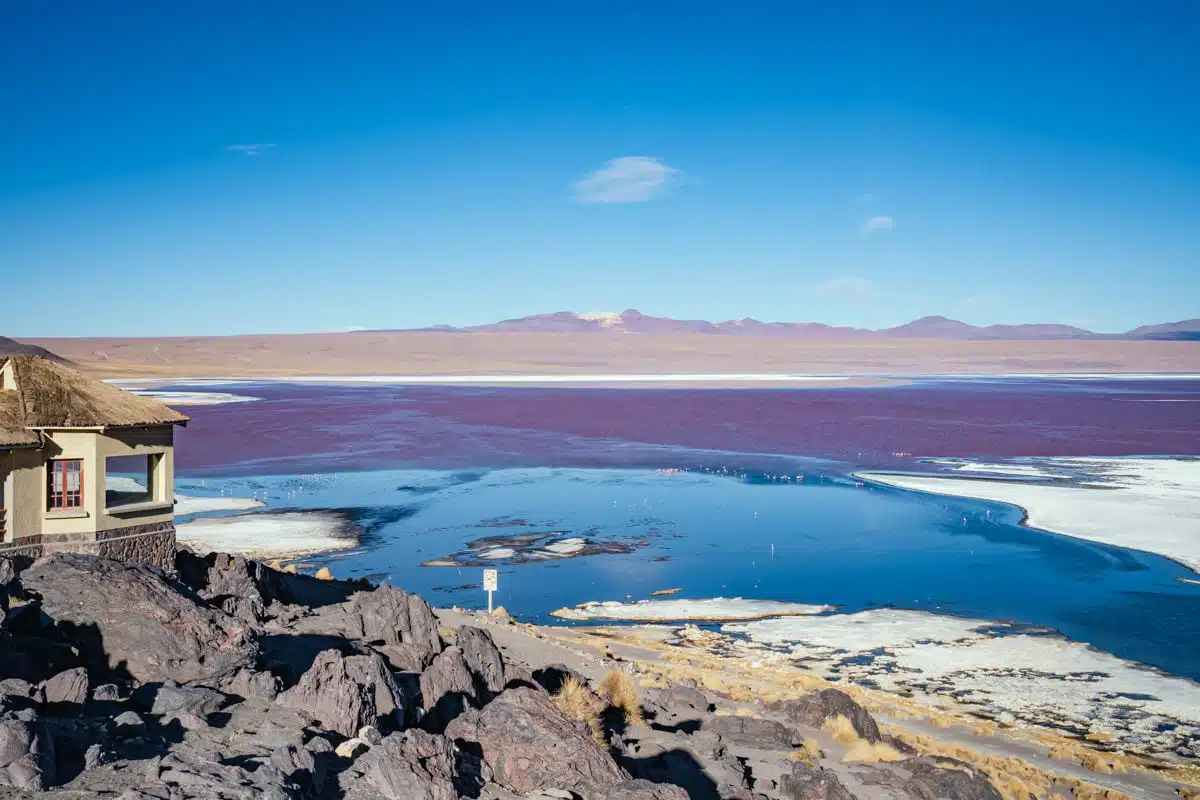
Tours start from a number of destinations in the area – most often from Uyuni or Tupiza in Bolivia. You can also organise tours from San Pedro de Atacama in Chile too – it’s very close.
I opted for the tour starting in Tupiza and would highly recommend it as you get to see a lot more.
Hire a Car and Travel Independently
This is possible but not that many people do it as it’s a big undertaking.
Top Tip
If you decide to travel independently, talk to as many local tour companies and visitors as you can, to get as much information and tips before you start your trip. You’ll need to ensure you hire a car that is up to the rigours of the high altitude.
Hike to The Green Lake
It’s a 6km hike from La Cabaña. The hike itself is not long, but the high altitude makes it tricky, and so you should allow about 5 hours for the round trip.
Next Stops in the Altiplano
How about combining other places in Bolivia on your trip?
The Laguna Colorada and Laguna Blanca are a relatively short distance away.
A road trip across the Atacama Desert in a campervan is the perfect way to explore the other-worldly sites of the region, which sits just over the border of Chile.
Travelling to Bolivia? Read more Bolivia travel guides to help you plan your trip.
- The best things to do in Bolivia
- Best time to plan a trip to the Salar de Uyuni
- How to Visit the Salar de Uyuni
- Two weeks in South America – a step by step itinerary
Love This? Save and Share on Pinterest
